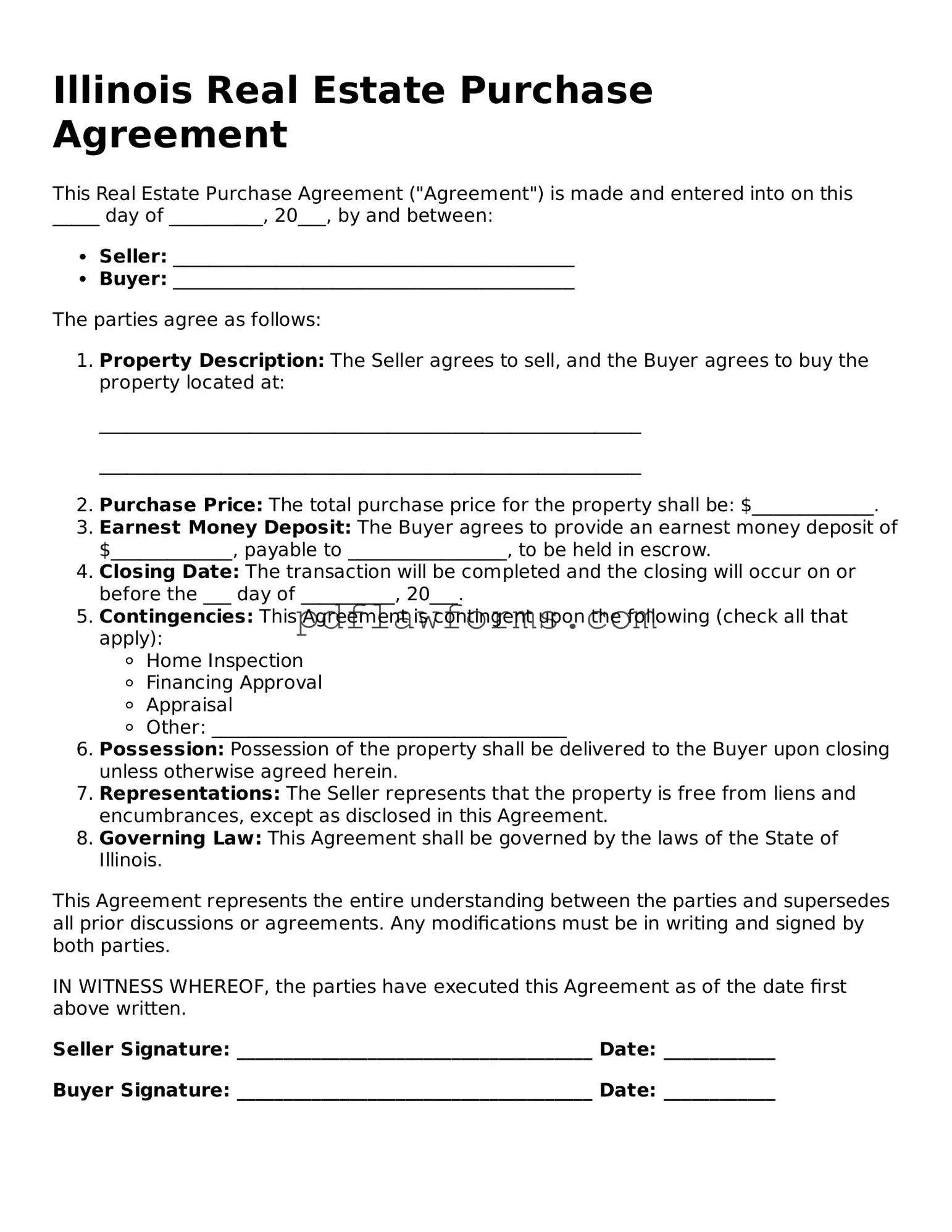Real Estate Purchase Agreement Form for the State of Illinois
The Illinois Real Estate Purchase Agreement is a legal document that outlines the terms and conditions of a real estate transaction between a buyer and a seller. This form serves as a binding contract that details the purchase price, property description, and other essential elements of the sale. Understanding this agreement is crucial for both parties to ensure a smooth transaction; start filling out your form by clicking the button below.
Make My Document Online
